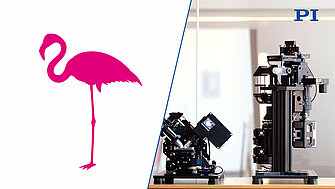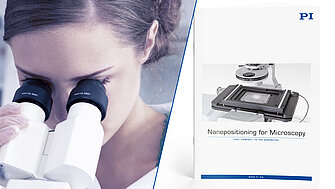The Sequencing-by-Synthesis method, also known as Solexa-Illumina-method, is the most widespread method among all Next-Generation-Sequencing methods (NGS). It was used to identify the RNA fingerprint of the SARS-CoV-2 virus in January 2020 in a research institute in Wuhan. Since then, this RNA fingerprint measurement has frequently been repeated in research institutes all over the world. And today this NGS method is used worldwide day-by-day to continuously monitor the SARS-CoV-2 virus for mutations. Sub-systems for motion and positioning of imaging optics and flow cells play a decisive role in this method.
Learn moreCategories
Category: Microscopy
Flamingo Light Sheet Microscopes Rely on Drives from PI
Precise Sample Positioning is Crucial for Conclusive Images
· Markus Wiederspahn· Dr. Thomas Bocher
Lightsheet microscopy (LSFM) is a powerful platform for in vivo imaging offering low phototoxicity and fast image acquisition. The Flamingo project from Professor Dr. Jan Huisken, Research Group Leader and Director of the Medical Engineering Department at Morgridge Institute for Research in Madison, WI, aims to make this technology easily available to researchers.
Learn morePrecision Positioning of Samples and Objectives
The Key to Successful Microscoping
· Markus Wiederspahn
Whether classical stereo microscopy, fluorescent, widefield or laser scanning microscopy, whether SEM, FIB-SEM, TEM, AFM or correlative microscopy - positioning samples and objectives with subnanometer precision is decisive for the quality of your results with all of these techniques. This fully clickable, new “Nanopositioning for Microscopy” brochure provides a comprehensive overview of objective scanners and sample stages with up to six degrees of motion freedom – illustrated by a variety of today’s microscopy techniques.
Learn moreSetting up and Adjusting a Fluorescent Microscope for Reliable Examination Results
PI Supports the GATTAscope Project
Fluorescent microscopy does not only help to make nanometer-small structures visible, but also to examine living cells and therefore explore the cell processes. In addition to preparing the sample, it is of paramount importance to set up and adjust the microscope properly to get usable results. This is exactly what the GATTAscope project is all about.
Learn more


